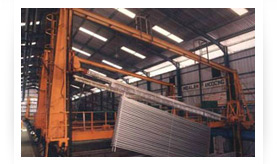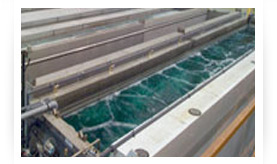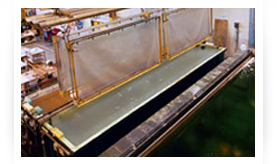Anodizing
World Technology Machinery offers several coating and finishing options, all in-house, to provide a complete service for your metal sourcing and finishing requirements. Surface treatment increases material durability and provides customers with various possibilities for color and decoration design, thus a wider range of applications. They protect the material from corrosion, pollution, sun-rays, humidity and discoloration by ultra-violet rays.
World Technology Machinery offers several coating and finishing options, all in-house, to provide a complete service for your metal sourcing and finishing requirements. Surface treatment increases material durability and provides customers with various possibilities for color and decoration design, thus a wider range of applications. They protect the material from corrosion, pollution, sun-rays, humidity and discoloration by ultra-violet rays.
| Aluminum's ability to respond to anodizing makes it an important process. Anodizing is an electrolytic process used to increase the thickness of the natural oxide layer on the surface of metal parts. Anodizing increases corrosion and wear resistance, and provides better adhesion for paint primers and glues than bare metal. This film will not crack, peel, or chip unless subject to severe stress or extreme thermal changes. |
 |
| A chemical pre-clean, followed by immersing the aluminum in a chemical to give the required finish: Phosphoric-acid solutions giving a bright finish and a caustic soda based solution, giving a matt appearance. Anodization changes the microscopic texture of the surface and can change the crystal structure of the metal near the surface. Coatings are often porous, even when thick, so a sealing process is often needed to achieve corrosion resistance. |
 |
| Anodizing also provides a means of coloring the oxidized metal. Anodic films are colored by a variety of methods. Pigments and organic or inorganic dyes are dissolved in heated water and the products immersed prior to sealing while they are still porous.
The color is then sealed in place by the usual method. The more durable colored films necessary in exposed environments can be produced as part of the anodic layer and are quite permanent. The thickness of the aluminum-oxide coating can be varied by processing time. The following figures are industry standards: |
 |
10-15 Microns: Suitable for internal applications and outdoor applications.
15-20 Microns: Recommended for the majority of ordinary architectural requirements.
20-25 Microns: Recommended for heavy duty external permanent architectural applications where little deterioration can be tolerated.


